Welcome back to the World Building Process series. I’m excited to continue growing our world map. And now we’re going to start adding important world map landmark locations.
This step represents crossing a major threshold in world building for our world map. Previously we have been only interested in detailing the natural affairs of our world. We built continents and plate tectonics. Then we added biomes, major rivers, and disseminated natural resources.
We approached the threshold of human geography by determining where our major people (Ancestories/Races) live in the previous Worldbuilding Process Post. Or, you can check the Worldbuilding Process series page for links to all the articles in this series.
Now, we’re firmly crossing the threshold into human geography by placing the major cities and other landmark locations on our world map.
It’s an exciting but also daunting prospect. We have hundreds of individual hexes to account for in this process. Each needs to be checked to see if a landmark location appears in the hex. And that’s every hex, from the highest mountain to the furthest corners of the deep ocean. It can be intimidating, but it’s far from impossible.
But, before we get started adding points to our world map we need to introduce what exactly we mean when we say a landmark location. There are six different types of world map landmark locations we’re going to notate. So here’s a brief introduction to the different types.
If you enjoy the content on this website and would like to support making more content like this in the future, consider sharing this article on your favorite RPG subreddit or forum. Your support means a lot and helps me stay motivated making content!
1. Landmark Capital Cities
A landmark capital city is usually a capital city in the sense it also houses a state’s capitol, but not always. New York City is a fine example. It’s not the capital of New York state, but it’s a capital city of business and finance. Around the world people know about NYC even if they’ve never been there or even speak English. A landmark city is iconic. Think of Paris, Venice, Tokyo, Tangiers, São Paulo, London, Sydney, St. Petersburg, Cairo, Seoul etc.
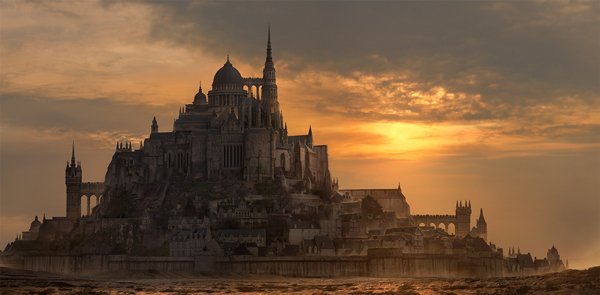
Since we’re building a fantasy world that has a bit more verisimilitude, the world’s landmark capital city populations will start at 60,000 residents. They may reach populations of upwards of one million residents, but that will be extremely rare.
Another fun worldbuilding part of landmark capital cities is they often have a nickname that people sometimes refer to them as. Nicknames like The Big Easy, The Pink City, and The City of Dreams.
They’re typically known for being a leader in some industry or focus. Is it the capital of business, fashion, shipbuilding, etc.That’s not to say it’s always a good reputation, it might be the murder capital or opium capital of the world.
2. Landmark Military Locations
These are the great military locations of the world. They can be castles, fortresses, great walls, shipyards, and naval bases. The most important thing to remember is that they are defensive locations, not palaces, chateaus, or pleasances.
Landmark Military locations stand at the shoulder of capital cities on the world map for centers of power, authority, and serving as capitals for the surrounding area.
Another important feature of landmark military locations is that they don’t exist in a vacuum. Wherever there is a military force, people will follow to provide them services. Vendors and tradespeople will show up to make trade with the military organization and its members. Soldiers need diversions to occupy their time and are often willing to pay someone to repair their gear.
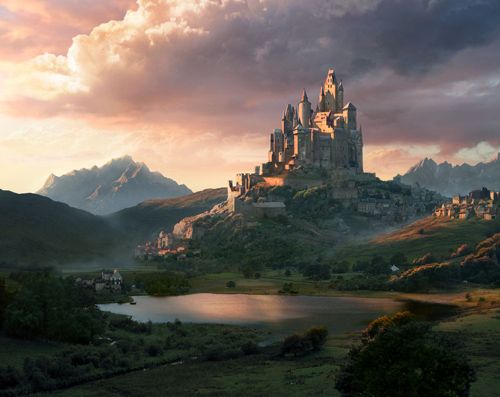
Often these cities grow up into cities like those that exist today near military bases, with populations between 1,000 and 60,000 residents. But, often they will turn into ghost towns if the military force moves away or abandons the location. Like mining boom towns, easy come and easy go.
The purpose of the landmark military location should be first and foremost in your mind. Look at the map area and think, why here? Is the castle a symbol of central authority, power, and provincial administration like King Alfred’s Winchester Castle? If it’s not the seat of a greater power, it may be the primary offensive or defensive point of operations for the area. Perhaps it’s the traditional mustering point for warriors to fight a neighboring state or to go on a crusade.
One of the primary functions of most military installations is to control access through the landscape. Castles and forts built on promontories, the bend of a river, or as an artificial border between states, like the Antonine Wall and Hadrian’s Wall. They dominate the landscape and help enforce who can go where in the locale.
Another function of a landmark military location is to protect some precious resource. Maybe it’s an area of fertile farmland, a critical freshwater source like an oasis, or a plain ol’ gold mine.
Speaking of gold, these installations can also serve as a place to accumulate and store wealth before distribution or shipment. And remember, in a pseudo-medieval world wealth isn’t necessarily a treasury of coins. It might be grains, holy relics, and other pieces of art. While typically we think of a castle being the home of a great lord or lady, it could very well be the home to a religious fighting order like the Templars or Hospitaliers.
3. Landmark Religious Sites
Talk of religious orders leads nicely into our next type of landmark location, landmark religious sites. Like landmark military locations before it, think about religious sites in broad strokes for what qualifies. Don’t limit yourself to temples or cathedrals.
Sure the Hagia Sophia is a landmark religious site, but so is Mount Sinai/Jabal Mousa. A landmark religious site may be a cathedral or grand temple, a great cloister, or the central authority of a religion like the Pope in Vatican City. It can be the sites of miracles, the ancient home of the gods, a place of great martyrdom, divine ruins, even the tomb of a religious VIP.
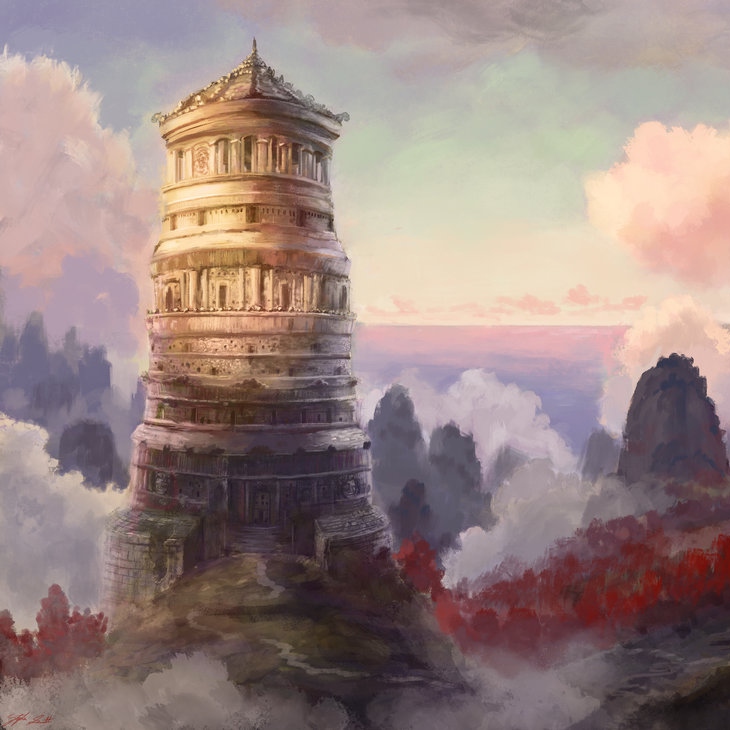
When considering a natural landform as a religious site, ensure that it’s the religious aspect of the site that makes it compelling and it’s not just an impressive natural wonder. Mount Olympus may be the hearth of the gods from Ancient Greece, but it also dominates the landscape so you will need to decide if people find a natural location more compelling because of what it signifies as part of the surrounding religion and culture or just that it’s impressive on its own merits.
And don’t forget that people like to visit holy sites. So again, you will have tradespeople and vendors open up shop to accommodate travelers, pilgrims, and religious residents. Eventually growing into a city (pop. 1-60K) in its own right.
You may also want to consider the influence of the religious landmark location and how important it is for the faithful to visit the location. Because that will inform you how likely it is for the place to become subjected to violence as people want to control the location and access to it. Taking back the Holy Land, crusaders, and all that fun stuff. This is especially important if you have schisms in your world’s religions either as influential cults or their own full-formed cousin religions like the Abrahamic religions.
4. Infamous Monster Lairs
The first three landmark location types are by and for civilized people. But now we’re going to talk about monsters, the biggest of the Big Bad Evil Guys and where they fit into the world.
My baseline assumption for this world, and worldbuilding in general, is that prime material plane creatures tend towards neutrality as an alignment. Monsters and people may be cruel, petty, hateful, or motivated by vengeance but there aren’t many overt, just evil for evil’s sake creatures and factions roaming around. They have a goal with motivation and it’s personal. They will use means that are the most effective, expedient, and efficient to realizing their goal.
Congratulations, that’s building better villains and BBEGs 101 for you world builders and Dungeon Masters.
All right, so what constitutes an Infamous Monster? Well, anything powerful and nasty. The iconic roost of a powerful, ancient red dragon is of course what first comes to mind. But, it could also be the seat of a power-hungry warlord, or a powerful spellcaster like the sorcerer-kings of Athas. Or, you could go the JRPG route and have to kill a god or Old Ones-style creature from beyond our understanding and comprehension.
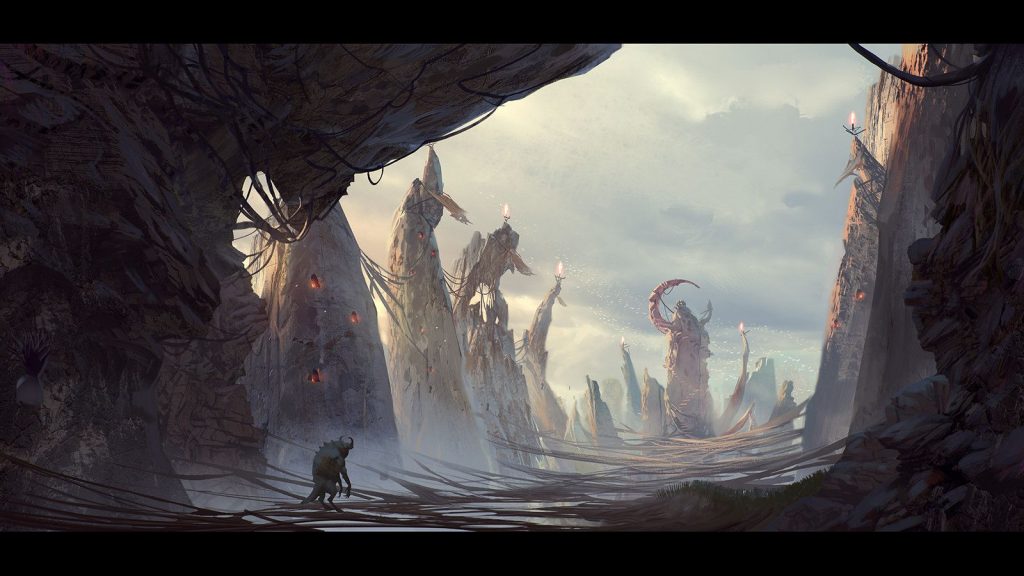
Whatever the form of the adversary, it should be by D&D 5e standards a Tier 4 adventure BBEG, so that’s a creature of Challenge Rating 17+. They are world shakers in their own right that threaten the well-being of this and maybe all planes of existence.
Some Example Infamous Monsters to Get You Started
- Adult & Ancient Dragons
- Doomsday Machines & Ultimate Weapons (Constructs)
- Extraplanar Foes (Aberrations, Celestials, Fey, Fiends)
- Humanoids (Arch-Spellcasters, God Vessels, High Priests, Warlords, PC Level 17+ NPC Analogs)
- Powerful Undead (Death Knight, Dracolichs, Lichs)
- Primal Forces of Nature (Greater Elementals)
- Terrifying Natural Monsters (Kraken, Tarrasque)
To flesh out these Infamous Monsters they will need a lair, so think about what that would be. Maybe it’s a warlord’s castle or a megadungeon like Halaster’s Undermountain.
A swamp teeming with hidden undead under the water and inscrutable magic that makes it difficult to keep directions clear, leading to travelers becoming lost in the swamp until they die. That sounds like a great lair for a black dracolich, which leads to our next consideration.
We have a BBEG with a goal and motivation, they have a lair, but they also don’t act alone. Other creatures will flock to their power and to serve as their minions. This local support pyramid of Tier 1-3 monsters that serve makes it easy to start fleshing out your Infamous Monster Lair as a potent faction in the world. You can do this to make a full 1-20 level campaign in one Atlas hex of the world map. So think about who serves your Infamous Monster villain.
For instance, an Adult/Ancient Dragon might have a structure like this
- Tier 4 > BBEG Adult/Ancient Dragon
- Tier 3 > BBEG Lieutenants like a half-dragon, blackguard dragon knight, or a subservient young/adult dragon (You think one dragon is bad, well now there’s two!)
- Tier 2 > Footsoldier Captains > Dragon blood sorcerer, pact warlock cult leader or a Wyvern/Young Dragon (It’s dragons all the way down)
- Tier 4 > Kobolds and subservient dragon wyrmlings (Whoops! All Dragons® edition)
All right, dragons are my personal most over-hyped, over-exposed D&D monster and I very rarely use them. But, a Whoops! All Dragons® campaign sounds like a bananas idea, which makes me want to try it out.
Sometimes these Infamous Monster Lairs will end up nearby other landmark locations, like a capital city. Hopefully that will give you a little juice to start thinking about that relationship. If that seems impossible that a major BBEG can be that close to another location, remember that nearby is based on perception. At this scale of a world map, the distance between locations in adjoining hexes are going to average more than 400 miles (650km) away.
Not the other side of the world from, but also someone exiting the capital city isn’t going to accidentally trip into the BBEG lich’s lair. It takes about a month of traveling by foot to cover the distance between locations in adjoining atlas hexes.
But, what about the places that came before?
5. World Map Landmark Ruins
No fantasy world worth its salt would be complete without forgotten ruins, relics of an age gone by, the before time. Forgotten ruins are a hallmark of fantasy and especially Dungeons & Dragons parties venturing into sunken tombs and forgotten dwarven halls. Because being an adventurer is about one step away from being a grave robber.
Remember, these are landmark ruins so they’re well-known and often large. To make life easy, you can roll 1d4 and use the resulting Landmark location type as the base for your ruin. While in D&D ruins are often abandoned, they don’t necessarily need to be.
There may be a village or city situated alongside or within the ruin (similar to Ostrogoth-occupied Rome), or it’s being used by one of more factions of Tier 1-3 monsters as a base of operations.
And even if it’s not sentient beings, nature abhors a vacuum and many types of natural beasts and monsters could be using the ruin as a lair as it’s slowly reclaimed by nature.
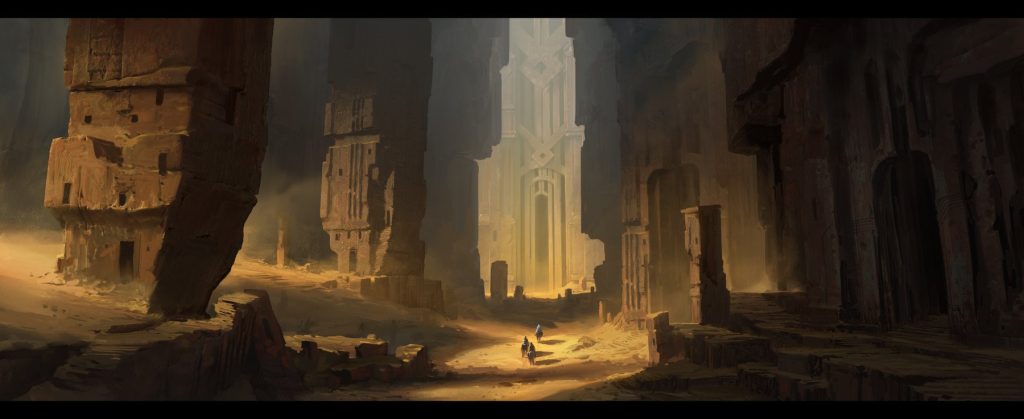
You could also set up a Shangri La/Atlantis situation, a lost city or hidden temple whose location is unknown to contemporary people. Maybe the location is full of antiquarians/archeologists or treasure hunters the adventuring party can use for information or serve as rivals/villains.
If you want even more fun, take it a step further and roll 1d6 instead of 1d4 for the type of landmark ruin. This roll allows you to come up with interesting results like ruined ruins.
The idea of a second, older ruin layered beneath a surface-level ruin. Archeology is full of examples of people building things on top of old ruins, and not just modern constructions, but ruins of old constructions on top of even older constructions.
Using the 1d6 roll will also open up your worldbuilding to the idea of ruined world wonders. Of course there are plenty of ruins of artificial world wonders. Rubble from destroyed monuments and great feats of architecture that were never completed. Even today, we have plenty of examples of urban planning gone wrong, completed cities that were never occupied.
But, you can also broaden your horizons and imagine what a ruined natural landmark might be. Imagine the Great Barrier Reef, but dead. For me this string of thought brings to mind Hebra Peak in Zelda Breath of the Wild, where a Sacred Beast very clearly lasered a hole right through it and the mountain in Horizon Zero Dawn with its side exploded.
It’s important to think about the cause of the ruin. Was it ruined by people, maybe some natural event, or a weird cataclysm like wild magic, a powerful curse, or interaction with a different plane of existence.
And onto the last type of landmark location to add to a world map!
6. World Wonders
Here on mundane ol’ Earth we have two types of world wonders, natural and artificial. But, for a fantasy world like the one we’re building in this series we also need to account for weird wonders.
So, quickly, here’s what that means.
World Wonder Categories
Artificial World Wonder Examples
- Geoglyphs
- Monuments
- Palaces
- Rice Paddy Art
- Tombs
Natural World Wonder Examples
- Canyons
- Mountains
- Natural Harbors
- Volcanoes
- Waterfalls
Weird World Wonder Examples
- Dead God Remains
- Earth Motes
- Fae-touched Forests
- Fonts of Magic
This is the area where I personally struggle the most. I’ve found things like UNESCO’s World Heritage List to be a good source of inspiration.
As with landmark ruins, it’s worth considering if there’s any humanoid habitation in the area. A world wonder like a fae-touched forest probably has all sorts of fae creatures in it, but it may also host one or more Eladrin settlements. This is important to consider because if there’s not any humanoid habitation, how do people know about it? Is it a fabled or lost place, or you could determine in your world if nothing is near it that it is indeed undiscovered.
Assuming it is discovered, how do people interact with it? Well, the first inclination is sightseeing, that’s what we do with many natural and artificial wonders of the world today. People climb Mount Everest, they visit the Taj Mahal, Pyramids of Giza, and the Eiffel Tower on vacation. People live and work in the Harbor of Rio De Janeiro and The Grand Canyon.
Just ensure it’s not an important because of religious sentiment or else it would be a Landmark Religious Site instead. But, it can have a huge impact on the local cultural identity with minor or quasi-religious significance like Mt. Fuji in Japanese culture.
Addendum on Artificial, Natural, and Weird Categories
I actually use these categories all the time as a D&D Dungeon Master. Most things fit these categories pretty well and having a mixture of them in a campaign you run helps keep things from getting stale.
While these categories are more often used in other parts of worldbuilding and running games as a Dungeon Master, they’re worth introducing here since I broached the subject.
Most commonly I used them for determining the source or origin of something in my games or in determining what kind of threats make the most sense to appear for players based on their location. This will be covered in more depth in future articles when we discuss civilized, frontier, and wild areas.
But it’s a pretty simple concept to use. Artificial are people or things made by them, Natural are flora, fauna, natural geology, and Weird are things generally not artificial or natural and most-often source outside the material plane.
Using 5e’s monster types we can catalog the different kind of creatures, locations, and things that might fall into each bucket.
Artificial Monster Types
- Constructs
- Giants
- Humanoids
- Oozes
- Undead
Natural Monster Types
- Beasts
- Dragons
- Elementals
- Monstrosities
- Plants
Weird Monster Types
- Aberrations
- Celestials
- Fey
- Fiends
- Oozes
In D&D lore, oozes have both a Demon lord, putting them in the Weird category, and lore attributing their intentional and accidental creation to spell casters, making them Artificial.
The system isn’t perfect. You could definitely argue that Dragons as both powerful spell casters and sentient creatures belong in the Artificial group. But there are also two dragon gods and in some lore dragons are their mortal form so that seems pretty extraplanar in origin and Weird.
For me, they’re most-often depicted as apex predators with a lair and hunting ground they guard, which is very Beast-like. In fifth edition, some gnolls are humanoids while others are classified as fiends so… it’s more like a loose guideline than a hard-and-fast rule. It’s good baseline for figuring things out quickly.
Plus, it’s really easy to make artificial and natural things into weird things. Like the gnolls. Usually they’re humanoids, but these gnolls are Yeenoghu’s Chosen so they have weird demonic powers on top of their vanilla gnoll aspects.
Want more useful stuff to help you be a better Dungeon Master or Game Master?
You can find downloadable content on DriveThruRPG packaged for easy use digitally or analog. Everything in the store is Pay What You Want and even a dollar helps pay the bills and helps me purchase new RPG material to turn into future content.
Populating World Map Landmark Locations
Now that we’re clear on what’s getting added to the map, it’s time to drop some fun landmark locations on our map. The way I’ve designed it is to make a percentile roll for each hex on the map using the below table.
World Map Landmark Location Stocking Table
| Temperate (31-60° N/S) | Tropical (30°N – 30°S) | Arctic (61-90° N/S) | |
| Major River Estuary | 35% | 30% | 25% |
| On a Major River | 30% | 25% | 20% |
| Coastline & Shallows | 25% | 20% | 15% |
| Inland | 20% | 15% | 10% |
| Rough** | 15% | 10% | 05% |
| Deep Ocean | 01% | 01% | 01% |
*Includes land hexes and shallow waters where archipelagos, peninsulas, and promontories are most likely to occur **Difficult to inhabit landscapes like Hills, Highlands, Mountains, Wetlands, etc.
Once you determine a landmark location exists in the hex, roll 1d6 to determine the type.
- Capital City
- Landmark Military Location
- Landmark Religious Site
- Infamous Monster Lair
- Landmark Ruins
- World Wonder
The likelihood for a landmark location is based on its geographic location and climate. This is based simply off of how people and civilizations have evolved and thrived throughout our history on Earth, which is the only factual point of reference we have. So I just extend that line of thinking to also include landmark locations like monster lairs as they would look for similarly ideal locations.
In conflicting situations like a coastal saltmarsh, that is Rough but also Coastline, I historically default to the larger chance of a landmark. Maybe I’m biased, but I want more things on the map if given the option.
You may also want to keep in mind that natural and weird world wonders can happen anywhere. To accommodate for this you can choose to roll at 20% for land and coastal hexes and 1% for deep ocean hexes. I’m going to roll on the table as is because:
- 1. It’s simpler and
- 2. I like the idea of natural and weird world wonders showing up in areas where people in the world are more likely to know about engage with them.
The part of this landmark location stocking table that I’m unsure about is the Deep Ocean at 1%. There are hundreds of deep ocean hexes on the world map. Even at a 1% stocking rate I may end up with more than half a dozen deep sea landmark locations in the middle of nowhere.
One ancient great temple to a sea god built on a faraway isle in the middle of the ocean is cool, six not so much.
Originally I wanted to make it a 1d20 table, but changed to 1d100 for the table based on deep ocean occurrences. If I end up with too many deep ocean hexes I may decide to reformat the table as a 1d20 table and force a second 1d20 roll to confirm locations on deep ocean hexes. That would change it to a 0.25% chance which may make more sense.
But, the only way to find out if the table works, is to use it. So I’m going to put on a pot of coffee and warm up my dice rolling fingers, to stock these hexes.
WORLD MAPPING INTERMISSION
World Building Landmark Location Results
Whew, I’m back. This is one of those times where I wish I knew more about programming as I believe this process could have been much easier with some automation. Yet, at the same time, there’s something relaxing about slowing down on the weekend and just hand rolling dice and quietly world building. It’s rewarding watching it slowly bloom with places popping up across the map and wondering what they are.
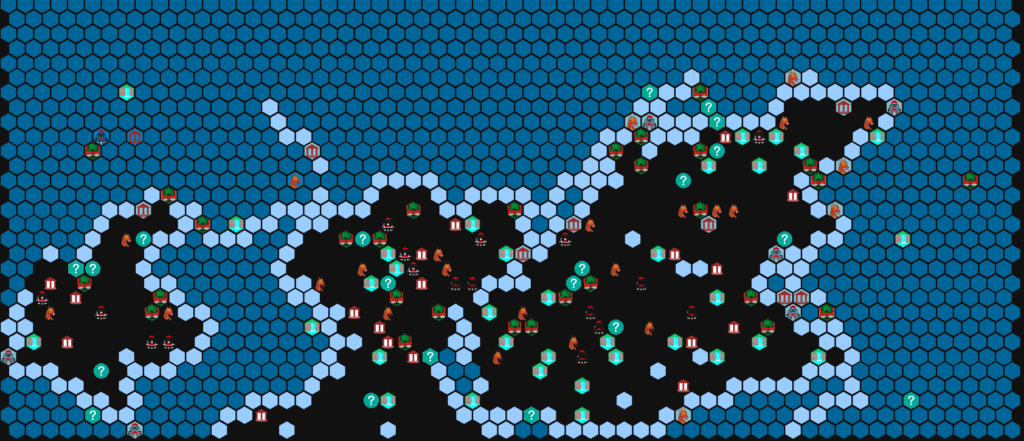
Deep Ocean World Map Landmark Results
Did I decide to change the Deep Ocean landmark probability?
No. I decided I was OK with the results I got for landmarks in the deep ocean. But, just to make it easy for you and probably myself in the future, here’s the 1d20 table for a reduced occurrence of deep ocean landmark locations.
1d20 World Map Landmark Location Stocking Table
| Temperate (31 – 60° N/S) | Tropical (30°N – 30°S) | Arctic (61 – 90° N/S) | |
| Major River Estuary | 14+ | 15+ | 16+ |
| On a Major River | 15+ | 16+ | 17+ |
| Coastline & Shallows | 16+ | 17+ | 18+ |
| Inland | 17+ | 18+ | 19+ |
| Rough** | 18+ | 19+ | 20 |
| Deep Ocean | 20† | 20† | 20† |
*Includes land hexes and shallow waters where archipelagos, peninsulas, and promontories are most likely to occur **Difficult to inhabit landscapes like Hills, Highlands, Mountains, Wetlands, etc. †Must confirm with a second 1d20 roll
We do have a few Deep Ocean landmarks on the world map and it will be fun taking a look at those and trying to figure out the what, how, and why of their placement in our world building. At this point we don’t even know if it’s above or below the waves.
Having one or more of these ocean landmarks can be beneficial for Dungeons & Dragons or other fantasy-based RPG campaign settings.
Because, D&D has quite a bit of baked-in support for aquatic races, spells, and monsters that rarely get to shine in most campaigns unless the adventuring party is constantly combing the beaches or you’re running a seafaring campaign.
Having a few cool landmark locations out in the ocean gives players and Dungeon Masters a reason to take leave of terra firma for an adventure or two without going full corsair/viking with the campaign.
World Map Landmark Results by Type & Location
| Total | W. Continent | C. Continent | E. Continent | |
| Capital Cities | 24 | 7 | 6 | 11 |
| Military Locations | 29 | 6 | 9 | 14 |
| Religious Sites | 27 | 5 | 10 | 12 |
| Monster Lairs | 25 | 3 | 8 | 14 |
| Landmark Ruins | 20 | 5 | 5 | 10 |
| World Wonders | 34 | 3 | 12 | 19 |
| Total | 159 | 29 | 50 | 80 |
A pretty successful mix by my account and the totals track with the size of the continents. I was surprised by the amount of world wonders I ended up getting. Part of the fun of rolling dice by hand. I need to make sure and keep that d6 in play because it likes to roll high!
Exciting World Map Landmark Results
In my results, I actually ended up with a large city in the frozen, Southern coast of the left-most continent. Really, it’s in an Antarctica situation. When I first rolled it I had no idea how it would work, but now I’m starting to piece it together. I already have some head canon about the world, who lives in it, and their feelings towards each other. This deep, arctic haven makes perfect sense for a group of people I know will be in the world.
I’m also very curious to learn about the situation in the Northern region of the right-most continent. In this belt of jungle there are three infamous monster lairs sandwiching a landmark military location and religious site. Maybe it’s a holy site that’s also important to the powerful creatures in the area? Whatever it is, I’m sure it will be interesting to figure out.
I struggle to stay active on Twitter, if you’d like to help support the blog you should hop over to Twitter, send me a follow, share, and ask me your questions. Or tell me I suck, Twitter also good for that too.
Wrapping Up Landmark Locations for the Atlas Hex Map
Overall I’m really happy with how things turned out and it was definitely worth the effort. We have a world map full of great landmark locations to start fleshing out and I think that will be the next World Building Process post.
We’ll take the Atlas locations we have here and flesh them out a bit. We’re not looking to get into the weeds on these locations, just the biggest bullet point basics and answer some of the pressing questions that we discussed in our description of the landmark locations at the beginning of this article.
Thanks for sticking around to the end of the article. If you’re looking for a way to help support the content that rolls up on this website, you can buy me a Ko-Fi for the low, low price of $1. That’s like 1/7th of what you’d spend at Starbucks.
Whether you share this content with others online or send a few bucks, your support is appreciated.

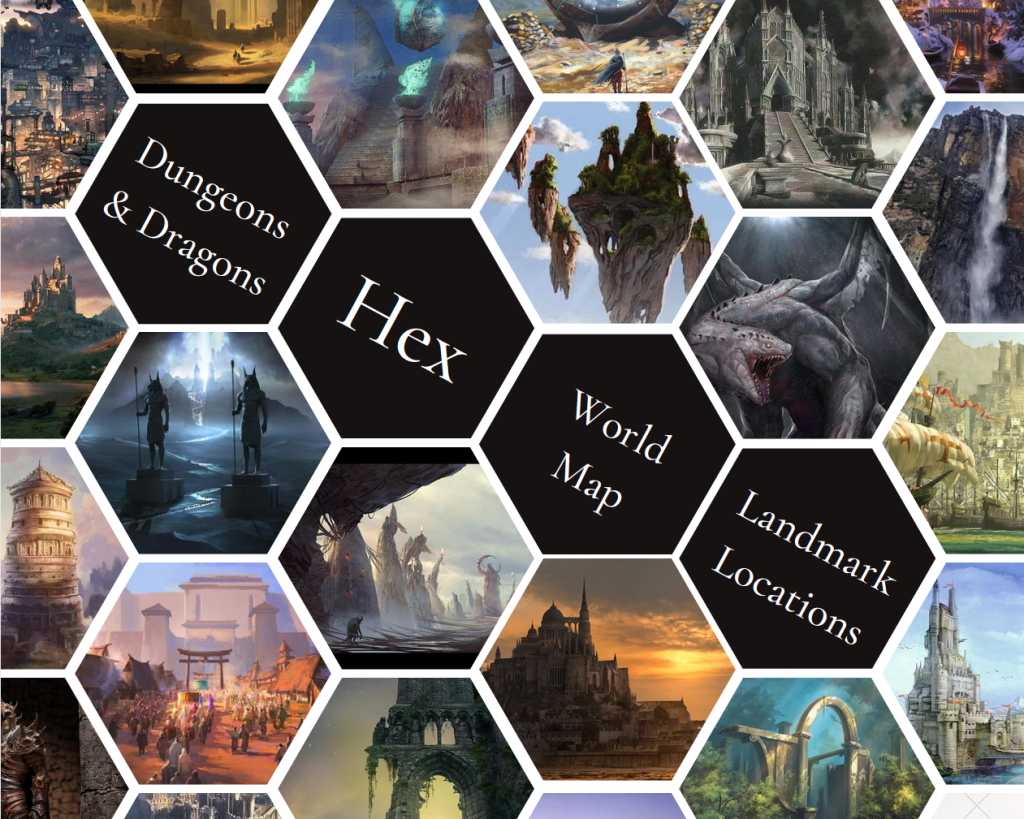
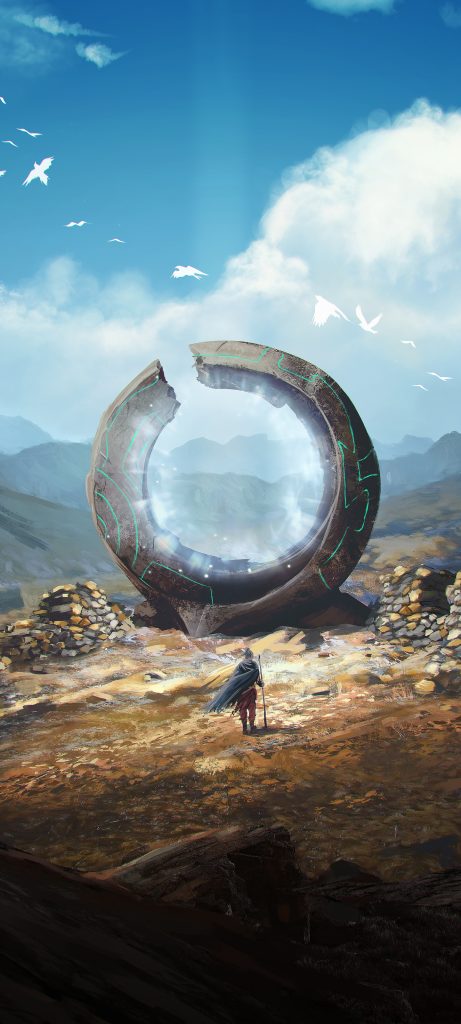
Pingback: D&D Region Hex Stocking: Heartlands, Marches and Wilds - RRF